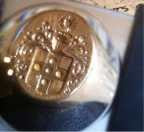Cycling in St. Louis
I took the old road bike out today and rode 30 miles around the city this afternoon. Here is an image of the route:
Here is a link to the Bike St. Louis Interactive Map as well as a screen shot:
Here is a link to the Bike St. Louis Interactive Map as well as a screen shot:
Also, check out the trailnet website for up to date info on cycling and planning for the region
Finally, here are some bike safety tips to get you going:
- Obey traffic signs and signals - Bicycles must follow the rules of the road like other vehicles.
- Never ride against traffic - Motorists aren't looking for bicyclists riding on the wrong side of the road. State law and common sense require that bicyclists drive like other vehicles.
- Follow lane markings - Don't turn left from the right lane. Don't go straight in a lane marked “right-turn only.”
- Don’t pass on the right - Motorists may not look for or see a bicycle passing on the right.
- Scan the road behind you - Learn to look back over your shoulder without losing your balance or swerving. Some riders use rear-view mirrors.
- Keep both hands ready to brake - You may not stop in time if you brake one-handed. Allow extra distance for stopping in the rain, since brakes are less efficient when wet.
- Wear a helmet and never ride with headphones - Always wear a helmet. Never wear a headphone while riding a bike.
- Dress for the weather - In rain wear a poncho or waterproof suit. Dress in layers so you can adjust to temperature changes. Wear bright colored clothing.
- Use hand signals - Hand signals tell motorists and pedestrians what you intend to do. Signal as a matter of law, of courtesy, and of self-protection.
- Ride in the middle of the lane in slower traffic - Get in the middle of the lane at busy intersections and whenever you are moving at the same speed as traffic.
- Choose the best way to turn left – There are two choices: (1) Like an auto: signal to move into the left turn lane and then turn left. (2) Like a pedestrian: ride straight to the far side crosswalk. Walk your bike across.
- Make eye contact with drivers - Assume that other drivers don't see you until you are sure that they do. Eye contact is important with any driver which might pose a threat to your safety.
- Look out for road hazards - Watch out for parallel-slat sewer grates, gravel, ice, sand or debris. Cross railroad tracks at right angles.
- Use lights at night - The law requires a white headlight (visible from at least 500 feet ahead) and a rear reflector or taillight (visible up to 300 feet from behind).
- Keep your bike in good repair - Adjust your bike to fit you and keep it working properly. Check brakes and tires regularly. Routine maintenance is simple and you can learn to do it yourself.





<< Home